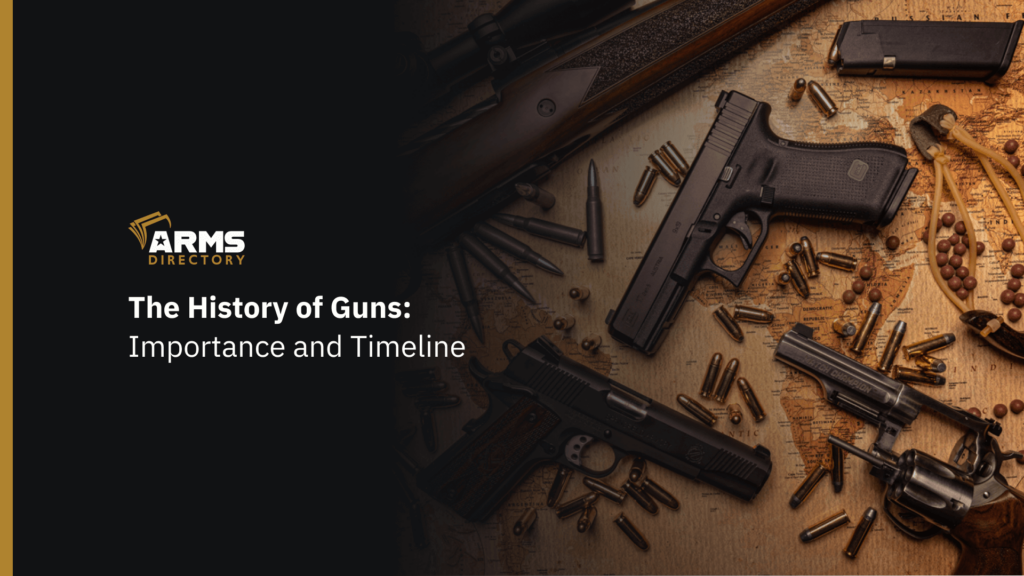
The History of Guns: Importance and Timeline
Like many of the greatest inventions of mankind, the history of guns was rather accidentally brought to life. It all started around 850, when Chinese alchemists were trying to create a “fountain of youth” potion.
Instead, they ended up making gunpowder, a mixture of charcoal, sulfur, and saltpeter. Of course, they soon realized that the newfound powder can be used for warfare.
Around the 10-12th century, the Chinese started using “flying fire” – the ancestor of all modern firearms. It was basically arrows that had tubes with gunpowder attached to them. Once lighted, they would propel over enemy lines.
Thus, the rich history of guns began. “Flying fire” was soon followed by other gunpowder-based weapons.
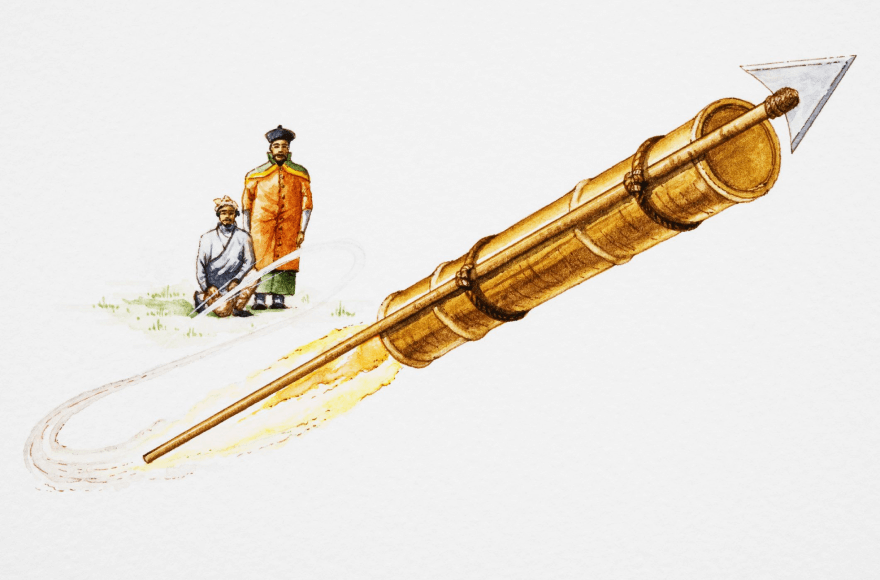
In this article, we will explore the major milestones in the notable history of guns that shaped the world. We are also going to briefly share the winding American history of gun control to give you an essential perspective. Keep reading and learn more!
Why Were Guns Invented?
Guns were created for military and defense, but their impact was complex. Firearms totally shook things up. They revolutionized battle, transformed hunting, and influenced politics and power over time.
On battlefields, matchlocks enabled coordinated firing, ending cavalry charges and close combat. Later, breechloaders and rifles made guns even deadlier. Firearms gave European colonizers an overwhelming edge.
For civilians, guns made hunting easier with minimal skill compared to bows. By the 1700s, deadly accurate rifles caused overhunting and conservation efforts. Multi-shot revolvers replaced flintlocks for defense.
Armories began to mass produce muskets in an economical manner, accelerating manufacturing and metalwork expertise. Gun-making spurred related industries in mining, chemicals, and machining too. Nations with robust domestic arms production grew stronger.
Though created for military might, firearms irrevocably shaped conflict, subsistence, and society across the globe. Their complex ripple effects still resonate today.
History of Guns: Timeline 1364 – 1892
Guns evolved insanely quickly once the ball got rolling. In just a few hundred years, we went from inaccurate fire lances to deadly precise pistols thanks to human creativity and competition.
Each breakthrough along the history of guns timeline shaped how wars were fought, how people hunted and survived, and how power was distributed.
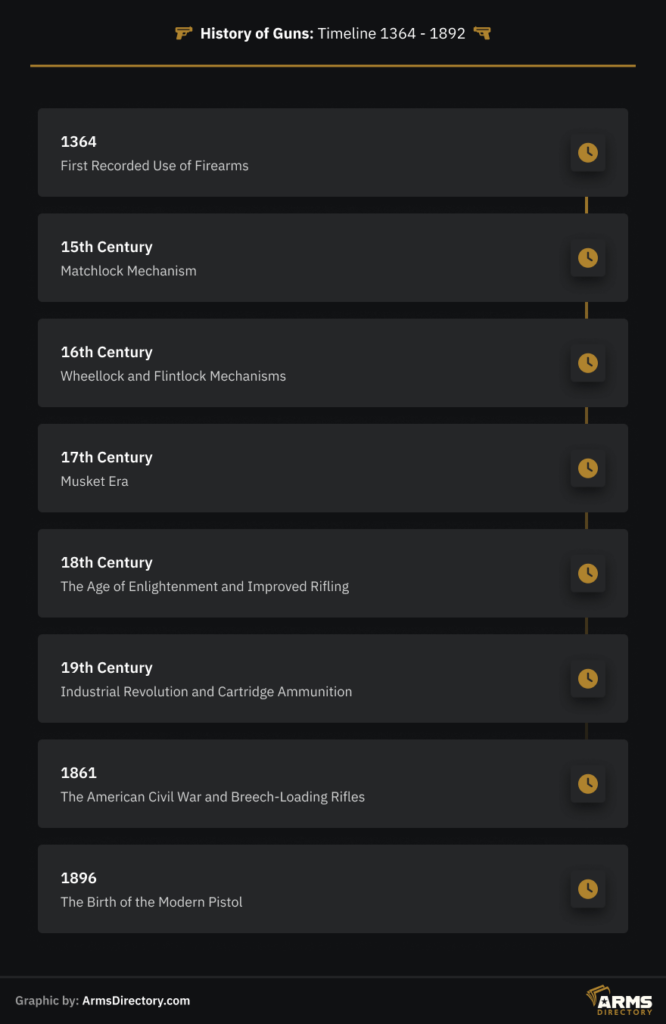
1364 – When the Firecrackers Began
It all started with a bang – literally – in 1364, when the Chinese cooked up something called a fire lance.
Essentially a tube filled with gunpowder and junk that exploded with flames and shrapnel when lit, it wasn’t exactly a precision shooter. But what a scary and loud novelty it must have been!
Yes, It all started with what was essentially kids’ sparklers.
15th Century – The Smoking Gun
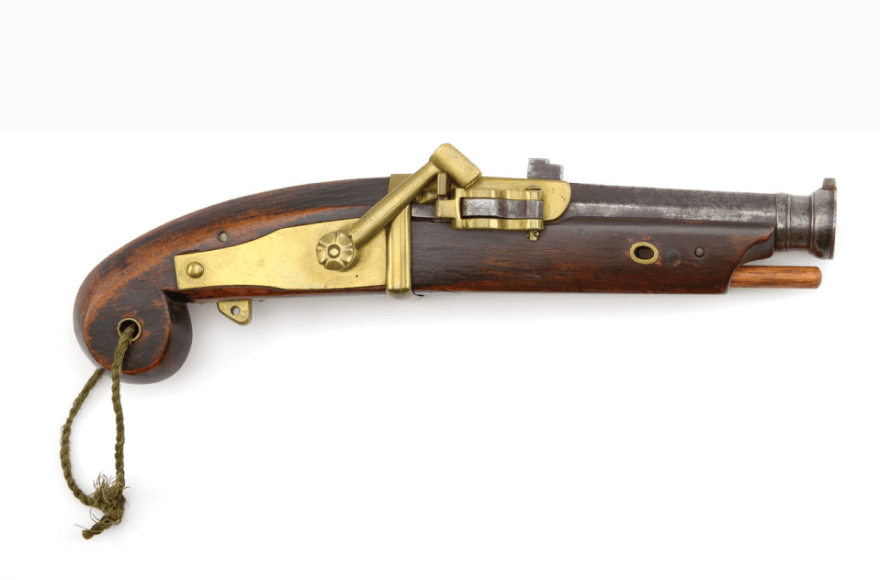
Things leaped ahead in the history of firearms in the 1400s when matchlocks changed the game. Igniting gunpowder with a slow-burning match was much better than wrestling with clumsy fire starters.
Soldiers must’ve been relieved going from rudimentary fire lances to refined matchlock muskets. No more flint-flicking frustration. With matchlocks, armies could finally fire coordinated volleys.
Of course, carrying lit matches had risks too – don’t dip your musket in water! But there was no denying the power of massed matchlock lines. It dramatically changed warfare’s nature despite the risks.
16th Century – Sparks of Genius
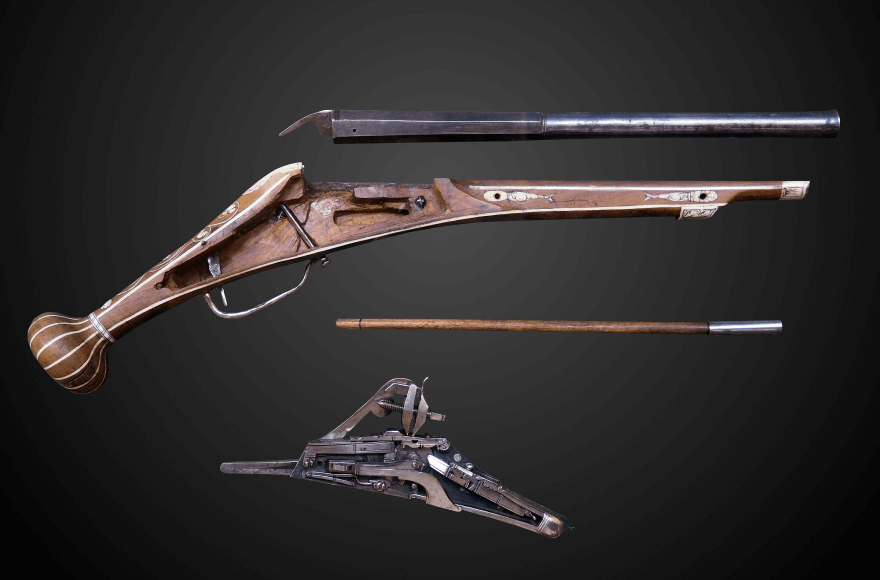
The 1500s lit a fire under guns. First came the wheellock, rotating steel against iron to shower sparks and fire. No more fiddly matches! Then the flintlock ignited charges by cracking flint against steel.
Both methods made firearms much more reliable and quick-firing, a huge upgrade for musketeers. These sparks of genius meant guns became useful beyond battlefields – for hunting, home defense, you name it.
Early ignition designs had a huge impact on the history of guns, paving the way for firearms to evolve.
17th Century – The Musket Takes Over
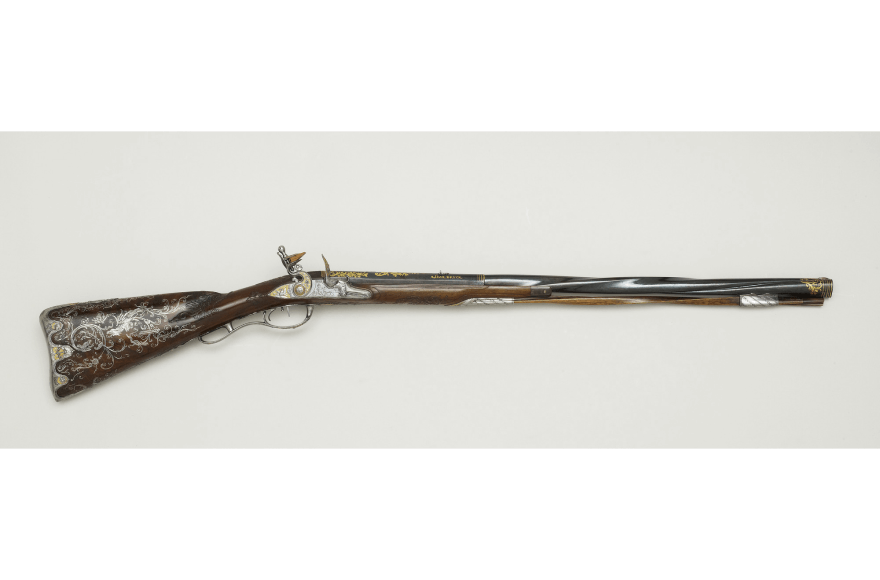
The 1600s were the glory days for the mighty musket. These trusty flintlock smoothbores became standard gear, prized for simplicity and punch in formation firing. Who needs fancy rifles when you can unleash a wall of musket balls?
Up close, muskets were clumsy compared to rifles. But on the battlefield, ranks of muskets spelled a whole lot of hurt with coordination.
Smoothbores had drawbacks, with wobbly aim. But they could load quickly, crucial when seconds counted. With basic drilling and a musket, even peasants became unstoppable fighters.
18th Century – Rifling Spins Things Forward
The 1700s were the Age of Enlightenment, with science and invention in full swing that changed the course of the history of firearms too.
Folks tinkered with all kinds of designs, including firearm barrels. They discovered that adding spiral grooves inside gun barrels – called rifling – made bullets much more accurate at range.
The grooves put a spin on the bullet, keeping it nice and stable in flight instead of tumbling randomly. Rifling took skill to create, but the results spoke for themselves.
Muskets and rifles went from wild spray-and-pray to real precision shooting. That stable spiral bullet was a real game changer in the history of guns so far.
19th Century – Guns Get Fast and Affordable
The Industrial Revolution mass-produced affordable, standardized guns.
Cartridges combining powder and ball sped up reloading – just pop one in instead of separate loading. The much faster firing advanced the history of guns another step ahead.
1861 – Civil War Tests New Firepower
The American Civil War was a fiery testing ground for new gun tech. Breech-loading rifles that loaded from the rear of the barrel became all the rage. No more shoving bullets down the muzzle like the old-school muskets. Breechloaders let soldiers quickly pop in bullets for fast follow-up shots.
These newfangled guns gave major tactical perks to troops using them. Imagine cranking off multiple breechloader rounds while your poor opponent is still reloading his muzzle-musket! It must have seemed like witchcraft.
1885 – The Rifle That Won the West
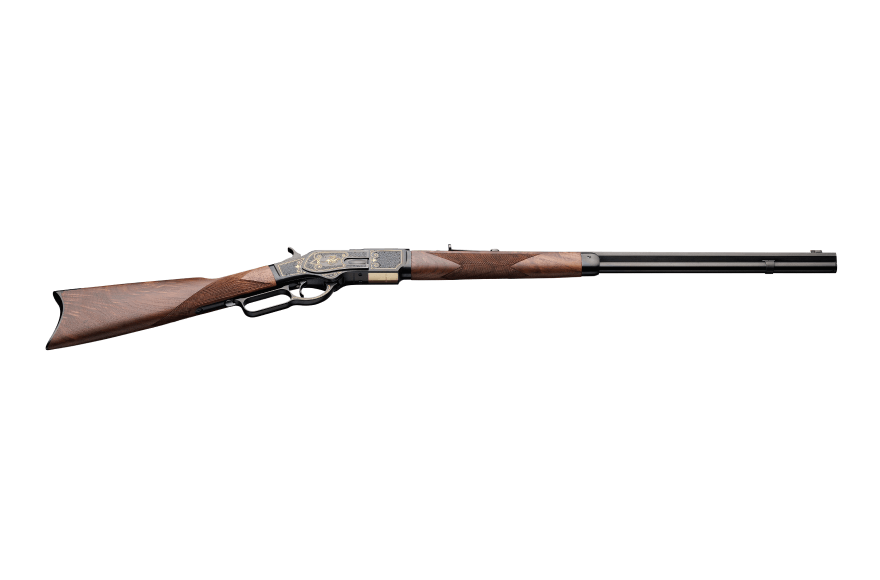
The Winchester Model 1873 lever-action repeating rifle changed the gun game. When it debuted in 1885, it was the first commercially successful repeater.
It could pack multiple rounds in a tubular mag for rapid fire. No need to reload after every shot!
Over 720,000 Winchesters rolled off production lines, arming everyone from outlaws to lawmen. Its slick design and rapid firepower made it a catalyst for the evolution of modern firearms. The era of single-shot muskets was officially over.
1892 – The Birth of the Modern Pistol
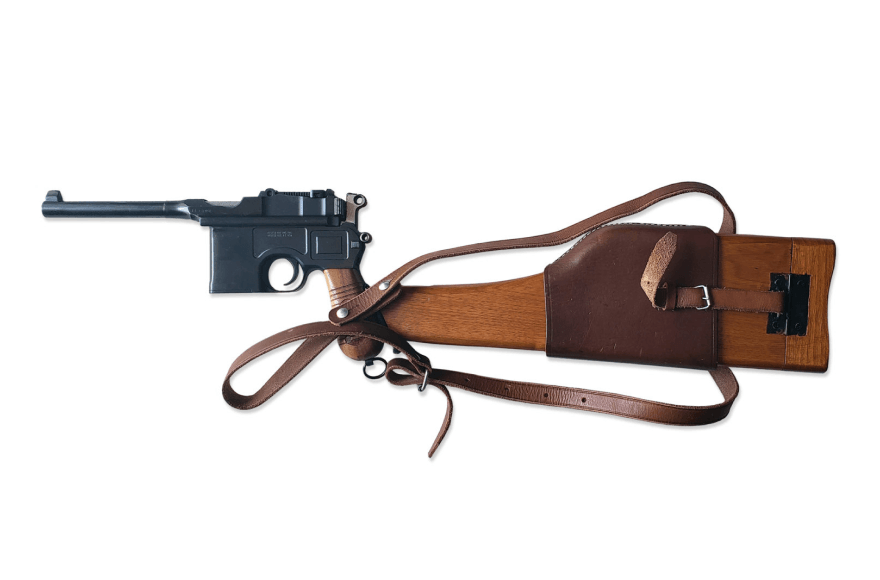
When the Mauser 1892 semi-auto pistol arrived, it revolutionized handguns. Designed by Paul Mauser, this slick sidearm featured a detachable magazine for fast reloads.
Forget manually reloading each chamber – with the 1892 Mauser, just pop in a pre-loaded mag and unleash controlled rapid fire. This innovative design became the blueprint for semi-auto pistols going forward.
The Mauser 1892 packed serious firepower into a compact frame. Its next-gen performance showed the world the future of pistols.
After the 1892 hit the scene, single-action revolvers looked antiquated overnight. The era of high-capacity semi-autos had begun.
Brief History and Timeline of Gun Control in the US
From colonial muskets to AR-15s, firearms and laws intended to control them have been intertwined throughout American history. Tracing gun control’s evolution reveals a complicated tug-of-war between individual liberties, public safety, and shifting societal attitudes.
Here is a short timeline of the history of guns control in the US:
Laying Down Colonial Law
Early gun laws were a patchwork of local rules in the British colonies. Restrictions addressed concerns like safety, slave uprisings, and Native American relations.
Sweeping mandates were rare, but some regulations emerged. Massachusetts Bay prohibited shooting near homes in 1637 after accidents occurred. Virginia enacted race-based gun bans in the 1680s as colonists feared slave revolts. Cities like New Amsterdam required registration of firearms.
As colonists chafed under British rule, gun ownership became associated with liberty and self-governance, foreshadowing later views. When Redcoats attempted confiscation at Lexington and Concord in 1775, musket-armed patriots made their stand.
The famous line “the shot heard ‘round the world” cemented Americans’ attachment to their firearms as tools of independence.
Sparking Debate with the Second Amendment
Following the Revolutionary War, the Second Amendment enshrined the right to bear arms in 1791. But its exact intent has stirred debate ever since.
Some argue the founders only meant organized militias could keep and bear arms. Others say it broadly protects individual gun ownership rights.
This ambiguity left the door open for later regulation. As settlers pushed westward, the promise of unchecked gun ownership beckoned.
The wild frontier life often demanded guns for survival against threats. As territories became states, they tended to enact few restrictions. Yet some locales did forbid firearms carry in towns as urbanization increased.
Tightening the Reins
After the Civil War, efforts to control criminal use of firearms slowly emerged. The post-war years saw bandits and gangsters armed with pistols and rifles, even machine guns from surplus military stocks. In response, states like Texas outlawed pistol carrying in 1871. Other areas restricted concealed weapons over the following decades.
In 1934, violent incidents involving infamous gangsters armed with automatic weapons like the “Tommy Gun” spurred the first major federal gun law, the National Firearms Act. It is a gun control act that strictly regulates machine guns, sawed-off shotguns, silencers, and other weapons associated with crime.
This set the stage for conflict between firearms access and public safety concerns.
Modern Gun-Control Movements
Later mass shootings periodically renewed calls for tighter gun control. After the assassinations of the 1960s, the Gun Control Act of 1968 expanded licensing and sales restrictions.
The Brady Handgun Violence Prevention Act in 1993 mandated background checks and waiting periods for firearm transfers from licensed dealers to an unlicensed person. The 1994 Federal Assault Weapons Ban outlawed production and sales of some semi-automatic weapons, as well as ‘large capacity’ magazines.
In recent decades, horrific massacres involving firearms, especially AR-style rifles, have spurred renewed pleas for stricter laws. Gun rights groups in turn decry measures they believe infringe on Constitutional liberties. The debate rages on.
Walking the Tightrope
Firearms occupy a complex place in America’s DNA. Guns are deeply ingrained culturally, yet misuse demands remedies. The history of gun control traces an ongoing struggle to balance inalienable rights and public well-being.
The past reminds us that respectful discourse and willingness to find common ground are keys to progress. Our nation still grapples to reconcile its Wild West inclinations with modern realities. But through open and informed discussion, we can strive to form “a more perfect union.”
Conclusion
Guns have woven themselves into the fabric of human life, becoming part of daily routines and playing a role in the rise and fall of empires.
Taking a peek into their past unveils a tech story that’s both inventive and a bit destructive – a reflection of our human nature.
As we glance back at the history of guns, we gain some perspective on how to handle these tools moving forward. The potential for guns to do good or cause trouble depends on how we handle them responsibly.
If you enjoyed today’s article covering some of the key milestones in the history of guns, don’t forget to check our public and private community groups to get insights from firearm experts and professionals!

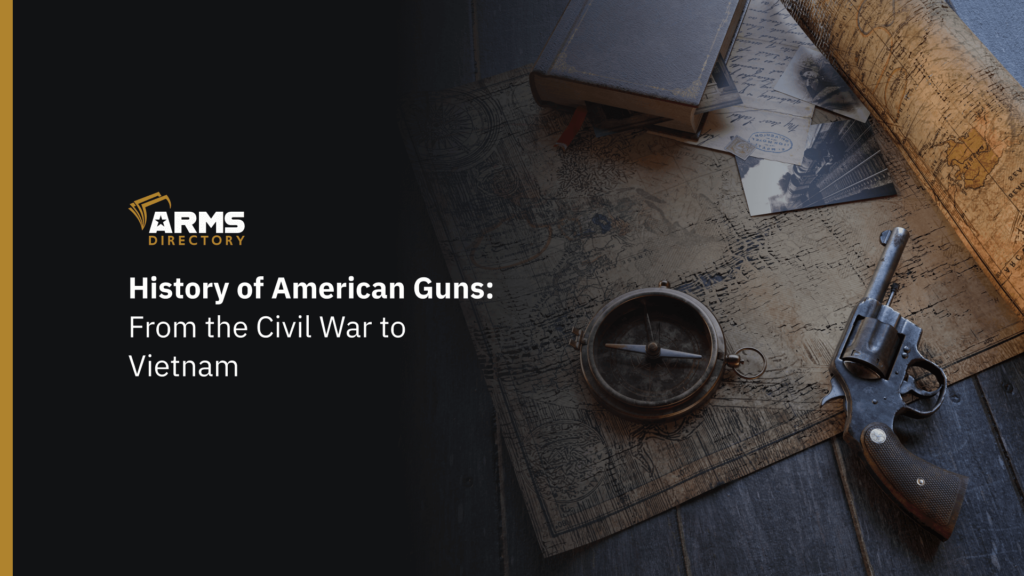
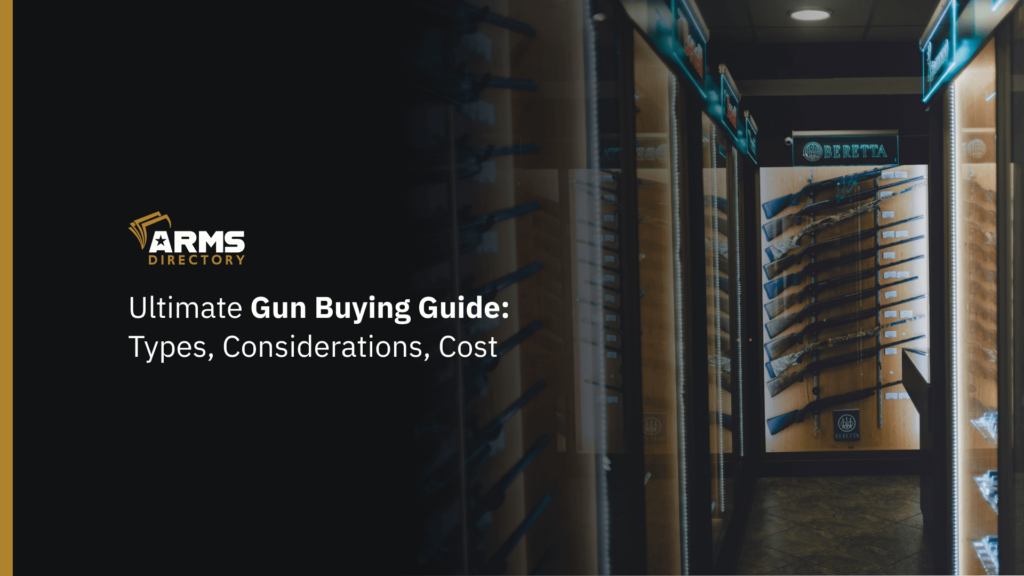
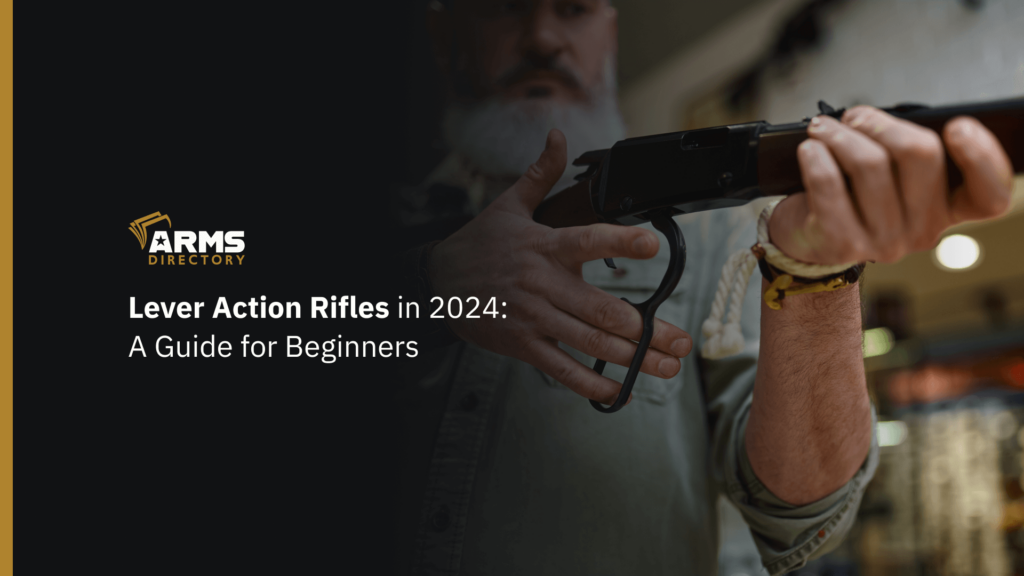
![The Ultimate Shooting Accessories for Every Weapon [A 2023 Beginners Guide]](https://vault.armsdirectory.com/wp-content/uploads/2023/08/30071223/The-Ultimate-Shooting-Accessories-for-Every-Weapon-A-2023-Beginners-Guide-1024x576.png)
![The Right Way to Buy and Sell Firearms Online [Guide]](https://vault.armsdirectory.com/wp-content/uploads/2023/10/20050323/The-Right-Way-to-Buy-and-Sell-Firearms-Online-Guide-1-1024x576.png)